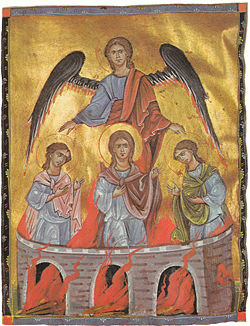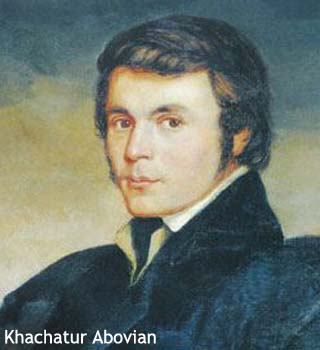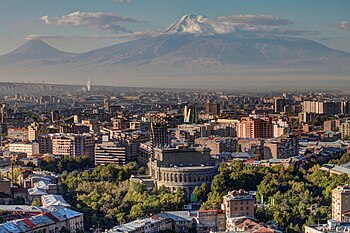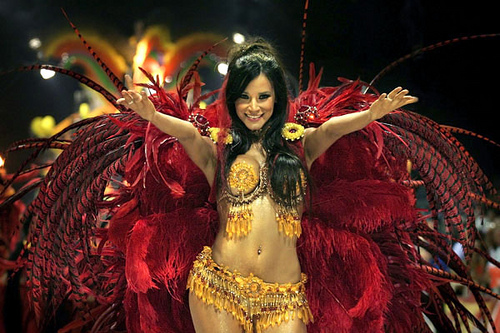There are a handful of public holidays celebrated in
Armenia, but there are other celebrations that are spread throughout the year.
January 1. New
Years Day. In Armenia, the new
year is brought in with cookies, sweets, and a lot of other foods prepared just
for the celebration. People will often exchange gifts for New Years as well. One
tradition in Armenia is to make darin. Darin is a type of large flat bread that
has a coin baked into it. The person who finds the coin is thought to have good
luck for the coming year. (I hope the good luck means they avoided the dentist. And I talked about this kind of bread concept when I did
Andorra.) Dolma is also really common around this time of year, especially made
with rice and grape leaves.

January 6.
Christmas Day. I’m sure you
noticed that Christmas isn’t celebrated on December 25, like much of the
world. Why is that? Well, a long time ago, the leaders of various Christian
churches gathered to decide upon a date that Christmas should be celebrated on,
since there really wasn’t an established confirmed date of Jesus’ birth. While
there were many countries in the East that chose January 6 or 7 or January 19,
they eventually changed to conform to the December 25 date. Armenia remained
one of the few who stuck with their first decision. No flip-flopping. That’s the date, and I’m sticking to it.
On Christmas Eve, many people will attend church for an
evening service and will bring “consecrated fire” (in what form, I have no
idea) home with them to shed light on and get rid of any evil spirits in their
home. On Christmas Day, they will eat a special dish of rice with raisins and
fruits. There isn’t any fish consumed on Christmas Day. (My husband would absolutely flip out
over the universal vegetarianism.) People will also take this time to visit the
graves of loved ones.
January 28. Army Day. This is a holiday designed to pay homage to the army that was
created when the country became the Republic of Armenia in 1992.
March 8. Women’s Day. Men will traditionally give women flowers, and people
generally spend the day with their friends and families.
April 8. Easter. One of the most popular religious holidays
in Armenia. One tradition is that
at the start of Lent, many people will take lentils or other sprout-bearing
plants and plant them on a flat tray and by the time Easter comes, it’s used to
place the Easter eggs in the sprouts as a display. Another tradition is to
paint the eggs red (to signify the blood of Jesus when he was on the cross),
and the women wear shawls and make a bread called Choreg (sometimes spelled
choereg or choerek or maybe some other alternatives). Choreg is like a braided
yeast roll, and if you wait, I’m going to make some when I get to that part of
the blog.

April 24. Genocide Remembrance Day. This is in remembrance of the 1915 genocide of over a million Armenians. It was an attempt by the Ottoman Empire
to completely eradicate the Armenian people and to remove them from the lands
where they have resided since antiquity. The ones they didn’t kill, they sent on
a death march to Syria. Many of the tortures foreshadowed those of the more
infamous holocaust by Nazi Germany in the 1930s-1940s. Every year, thousands of
people will join in a march to the Tsitsernakaberd, a memorial in Yerevan
designated to the victims of the Armenian genocide.
May 9. Victory
and Peace Day. This is a day that
celebrates the fall of the Nazi forces. During WWII, Armenians fought alongside
Russia and nearly a quarter of a million Armenian soldiers died in battle.
Armenia also has a Tomb of the Unknown Soldier in Yerevan and many people visit
it on this day.
May 28. Republic Day. This is the
day that Armenia celebrates (along with its neighbor Azerbaijan) its
independence from the Transcaucasian Democratic Federative Republic (try saying
that three times fast after three shots of vodka). It basically consisted of
the countries of Armenia, Azerbaijan, and Georgia. This holiday wasn’t really
celebrated until after the collapse of the Soviet Union.
July 5. Constitution Day. This is an official holiday. It marks the day its own
constitution was adopted. Victory Park in Yerevan is a popular place for many
national festivities, including speeches, concerts, and dances.
August 25. Vartavar. Celebrated 98 days after Easter (so this is a movable holiday), it’s a holiday
where people of all ages are encouraged to throw water on strangers. And it can
be by any means – either by water guns, buckets, hoses, however you get it there. It’s a welcomed
holiday in the August heat. This has got to be one of the best holidays ever,
especially if you’re a kid.
September 21. Independence Day. This celebrates the
independence of Armenia from Soviet Russia. Many people will fly Armenian flags,
and there are parades in the streets of Yerevan. Gathering together with family and concerts prevail during
the day, ending with fireworks displays at night. My daughter thought it was
awesome that there’s a holiday somewhere on her birthday.
December 7. Spitak Remembrance Day. In 1988, a 7.1 magnitude earthquake shook the
northern regions of Armenia, killing at least 25,000 people. Many of the deaths
were contributed to shoddy construction of homes and businesses created from
Soviet-era building. 111 countries sent humanitarian help to this area. This picture shows the Motherland memorial in Washington, D.C.
Up next: art and literature
Resources:
Wikipedia: “Public Holidays in Armenia” “Vartavar” “Armed
Forces Day” “Republic Day” “1988 Spitak Earthquake”




























